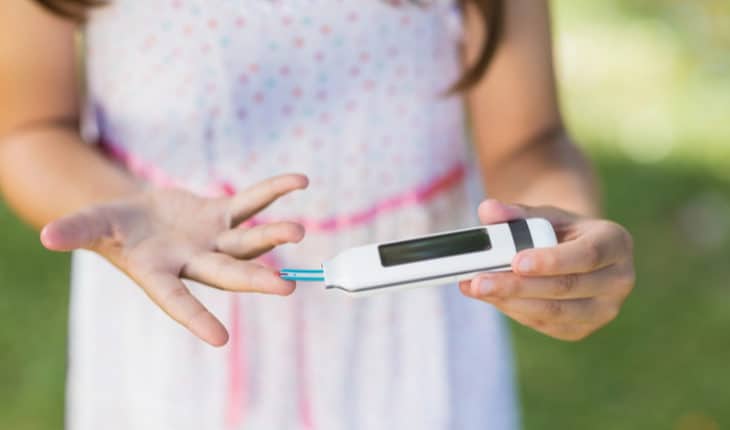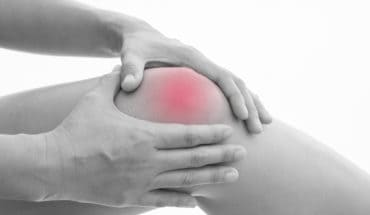A new study suggests there could be a link between COVID-19 and the development of type 1 diabetes in children. Thirty children in hospitals across north-west London presented with new-onset type 1 diabetes during the peak of the pandemic, approximately double the number of cases typically seen in this period in previous years, with clusters of cases in two of these hospitals.
Twenty-one children were tested for COVID-19 or had antibody tests to see whether they had previously been exposed to the virus. A total of five children with newly diagnosed diabetes had evidence of past or current coronavirus infection.
The study, published in Diabetes Care and led by clinicians at Imperial College Healthcare NHS Trust and researchers at Imperial College London is the first to find a possible link between COVID-19 and new-onset type 1 diabetes in children.
Karen Logan at Imperial College Healthcare NHS Trust and supervising author of the study, said:
“It appears that children are at low risk of developing serious cases of COVID-19. However, we do need to consider potential health complications following exposure to the virus in children. Our analysis shows that during the peak of the pandemic the number of new cases of type 1 diabetes in children was unusually high in two of the hospitals in north west London compared to previous years, and when we investigated further, some of these children had active coronavirus or had previously been exposed to the virus. We believe this study is the first to show a potential link between COVID-19 and the development of type 1 diabetes in some children. Our study was limited to one UK region and more research is needed to establish whether there is a definitive link between the two, but in the meantime we hope clinicians will be mindful of this potential link.”
Rebecca Unsworth, joint first author of the study at Imperial College, added: “Type 1 diabetes can be managed through insulin injections. However, children can become very unwell if the disease is not recognised and treated early. It is always important to be aware of early symptoms of type 1 diabetes and look out for the four Ts, so that we can potentially diagnose and treat the condition at an earlier stage. The four Ts are feeling thirsty, going to the toilet (passing urine) frequently, feeling tired and looking thinner (weight loss).”
Type 1 diabetes is a disease that causes the insulin producing cells in the pancreas to be destroyed, preventing the body from being able to produce enough insulin to adequately regulate blood glucose levels. If blood glucose is persistently too high it can lead to complications such as damage to the eyes, feet and kidneys. It is often diagnosed in children but the condition can develop in young adults. Type 1 diabetes can be treated with several daily injections of insulin or using an insulin pump to keep blood glucose levels under control.
Previous reports from China and Italy found a number of children presenting with new-onset type 1 diabetes during the COVID-19 pandemic, apparently unrelated to infection. This prompted concerns of delayed presentation, but the team at Imperial wanted to see whether new cases of type 1 diabetes might be linked to COVID-19 exposure. They suggest that the coronavirus spike protein might be able to attack and destroy insulin making cells in the pancreas.
The team analysed data from children based in five paediatric inpatient units from four north-west London Trusts; Imperial College Healthcare NHS Trust, Chelsea & Westminster NHS Foundation Trust, The Hillingdon Hospitals NHS Foundation Trust and London North West University Healthcare NHS trust, between 23 March (start of UK lockdown) and 4 June. They found an increase of children diagnosed with type 1 diabetes in two of the units, with ten cases each. This is an increase from two and four cases respectively, for April/May combined in the previous five years. However, rates in the other three units were similar to previous years.
Any child admitted with symptoms of COVID-19 including fever or cough was tested for active coronavirus; twenty one children were tested and two tested positive. In a proportion of children it was possible to test for evidence of previous exposure to coronavirus (antibody test); sixteen children were tested and three were positive.
In total, five children tested positive, either for active COVID-19 infection or previous exposure to the virus. However, antibody testing was not routine, and fourteen children were not tested for previous exposure to COVID-19.
Rebecca Unsworth, added: “During the peak of the pandemic widespread access to testing wasn’t available so we may have missed further cases of COVID-19 in these children who have new-onset type 1 diabetes.”
Seventy per cent of the children with new-onset diabetes in the study presented with Diabetic Ketoacidosis (DKA). DKA is a serious condition that can happen to people with diabetes if their body starts to run out up in the body, which can be life-threatening if it’s not found and treated quickly. Over 52 per cent of the children had severe DKA. The authors commented that this is a much higher rate than they would normally expect to see, and many children were very unwell.
Whilst the data doesn’t prove a direct link, the team believe that the fact that there was a significant rise in cases at the peak of the pandemic suggests that it is plausible that there is a link between some cases of new-onset diabetes in children and COVID-19. The team recommend a larger analysis to establish whether there is a definitive link between COVID-19 and new-onset type 1 diabetes, and if so whether COVID-19 has any impact on the severity of the disease.
This research is an example of the work carried out by Imperial College Academic Health Science Centre, a joint initiative between Imperial College London and four NHS hospital trusts. It aims to transform healthcare by turning scientific discoveries into medical advances to benefit local, national and global populations in as fast a timeframe as
possible.
- New study challenges social media’s mental health impact - 21st November 2024
- Do Finland introduces a new care pathway for epilepsy - 21st November 2024
- Innovative swim program for people with cerebral palsy - 21st November 2024






